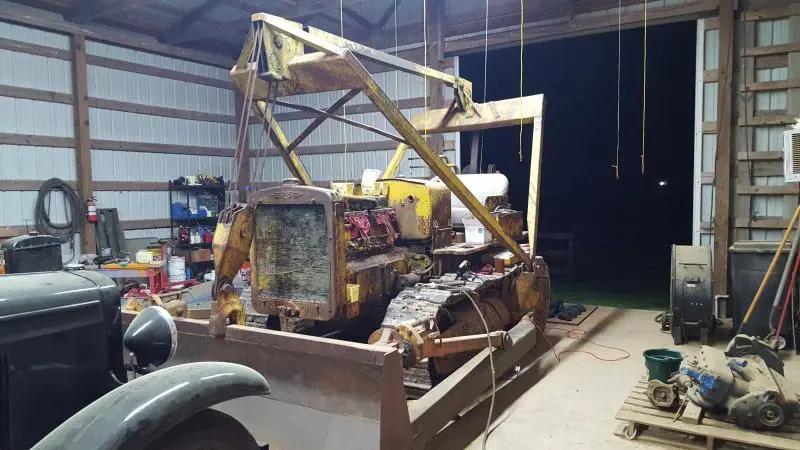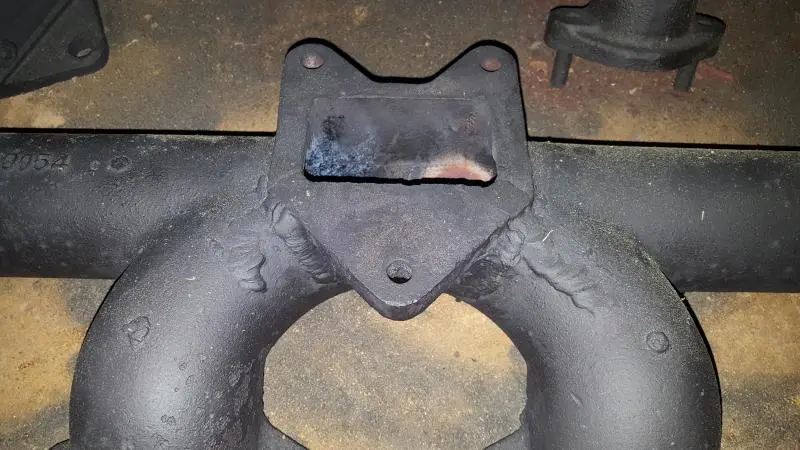If there is pitting I'd definitely use some sealer.
We usually use hi temp red permatex,I dont think the spray copper will give you enough squish out to seal pits of corrosion.
Although I do use it lightly on head gaskets I think u will be better off with hi temp rtv.
Hi Team,
if it is possible, going by the studs that my R5, Thirty-Five & Forty Tractor OMI pictures show, I would fit the manifolds and riser separately for ease, BUT, do not tighten any nuts until all components are in place.
Then I would start by very lightly tightening the manifolds and heat riser nuts a little at a time so as all components can come together without stresses. If you tighten one manifold and then another the first and second one and the heat riser may not come together without stressing a joint, flange, stud etc.
Your manifold maybe cracked due to the high heat encountered during hard running or because they were not tightened in small steps to allow the gaskets to crush and the parts to slide over one another to try and achieve as stress free a working condition/position as possible during the tightening sequence. I usually start at the centre of a manifold and work my way towards the ends in small increments of torque as is done when tensioning a cylinder head for example.
If it were mine I would likely loosen everything and do the sequence a second time after the gaskets have crushed to try and ensure minimum stresses are at play.
Others experience may vary.
Cheers,
Eddie B.


Thanks for advice on red rtv - I bought some tubes this weekend.
Thanks also for advice regarding sequence of installation. I really wanted to avoid starting bolting up parts with a bunch of rtv everywhere and discover its not going to work. Your sequence makes sense and I will work to leave parts loose initially and then tighten gradually over the network of studs. I had to do this with some water pipes on the R5 that I had to pull and fill in with some brass - they had started corroding through. Bolted them up loose and then tightened them down.
I attached a picture of the exhaust cracks - may be a combination of stress and heat given it is at the base of where heat riser bolts up. You can see where the welds are that I added
Also attached a picture of the R5 - a work in progress but a fun machine to run and work.
One other question on these manifolds - any experience and/or recommendations for torque setting when tightening the nuts? I assume less is more in this situation - no more than 20 pounds? I have some concern given the age, type of material and stresses that too much torque could stimulate additional cracking.
Thanks for the help to date!! 😊
Ross